"Nothing in biology makes sense except in the light of evolution."
Theodosius Dobzhansky
"Darwin continually emphasized the difference between his two
great and separate accomplishments: establishing the fact of evolution, and
proposing a theory- natural selection- to explain the mechanisms of evolution."
Stephen Jay Gould
People that do not accept evolution (despite the overwhelming
amount of evidence to support it) sometimes ask: If humans
evolved from monkeys or apes, why do apes still exist? (It might
as well be asked, Why are there still fish or reptiles?) Or even
better: Why don't chimpanzees change into humans now?
Homo sapiens and chimpanzees (and all primates in you go back
far enough) share a common ancestor. Humans did not directly
evolve from monkeys or apes. About 6 million years ago there existed
the common ancestor of humans and chimpanzees. Groups got separated
from each other and evolved differently. Sometimes animals with common
ancestors evolve (change) to become much different from their ancestor.
So a group (branch) of these ancestors became chimpanzees over many
years and another group evolved into the many hominins/hominids
(early humans) groups and eventually one of those groups produced modern
humans. Most of all, the process take much time, millions of years. I understand
that if you believe the world to be only thousands of years old, you don't
stand a chance of understanding, or believing the process or mechanisms
of evolution (and you probably refuse to try to understand).
SH
Love it. I really like shawn the baptist's tiny stool.
http://youtu.be/68g0MBO_uTM Richard Dawkins on YouTube
"And at the very heart of life on Earth-the proteins that control cell chemistry, and the
acids that carry the hereditary instructions-we find these molecules to be essentially
identical in all the plants and animals. An oak tree and I are made of the same stuff.
If you go far enough back, we have a common ancestor."
Carl Sagan
Evolution isn’t just a story about where we came from. It’s an epic at the center of
life itself. Far from robbing our lives of meaning, it instills an appreciation for the
beautiful, enduring, and ultimately triumphant fabric of life that covers our planet.
Understanding that doesn’t demean human life — it enhances it. We may be animals,
but we are not just animals. We are the only ones who can truly appreciate, as
Darwin put it, that there is “grandeur in this view of life,” and indeed there is.
Fact of evolution?
Richard Dawkins on evolution
Stephen Jay Gould on evolution
The key components in evolution are:
replication (reproduction)
variation (recombination and mutations)
selection (natural selection)
Variation is random, but selection
absolutely is not random.
"True, the raw materials for evolution-the variations between individuals-are indeed
produced by random mutations. These mutations occur willy-nilly, regardless of
whether they are good or bad for the individual. But it is the filtering of that variation
by natural selection that produces adaptions, and natural selection is manifestly not
random. It is a powerful molding force, accumulating genes that have a greater chance
of being passed on than others, and in so doing making individuals ever better able to
cope with the environment. It is, then, the unique combination of mutation and selection-
chance and lawfulness-that tells us how organisms become adapted. Richard Dawkins
provided the most concise definition of natural selection: it is "the non-random survival
of random variants.'"
Jerry Coyne
The best definition of life that I have encountered is
from a DK book entitled, Prehistoric Life:
"Life can be defined as a condition in which organic, animate matter is
distinguished from inorganic, inanimate matter by its ability to renew its
complex, highly ordered structure. This includes a capacity for change,
growth and reproduction, with functionality maintained until death, when
its constituents disperse back into the environment. In order to maintain itself,
life must be able to get energy and raw materials from the environment as well
as manufacture everything necessary for growth, repair, and replication. The
only element that is known to form living structures is carbon, which can
combine with itself, and other elements, notably nitrogen, oxygen, and
hydrogen, to form molecules of great diversity and complexity. Four main
groups of organic carbon compounds are found in living organisms:
carbohydrates and fats, which supply energy; proteins, built from amino
acids, which from structural tissue; and nucleic acids, the basic
components of genes."
Or slightly shorter definition:
"Life is a self-sustaining chemical system capable of
undergoing Darwinian evolution."
G.F. Joyce
RNA is as old as life. RNA, and the more complex, DNA, evolve.
Essential amino acids must be obtained from food
whereas non-essential ones are produced in the body.
There are twenty kinds of amino acids that support the body, each having their
own functions. There are as many as one hundred thousand kinds of proteins
that constitute the body, and these comprise only twenty kinds of amino acids
in various combinations. These twenty amino acids are essential to the body. In
addition to being the materials for proteins, they are used as an energy source for
the body when needed. www.hornetjuice.com
amino acids
Animal cell
There are more atoms in a human body
than there are stars in the universe.
http://youtu.be/6bCz2eFTBig Carl Sagan: Evolution is Fact
Prokaryotes reproduce asexually.
Eukaryotes all reproduce sexually, with very few exceptions,
like sponges and certain types of plants (dandelions) and some lizards.
A few species of lizard are only females (or primarily)
and are able to reproduce due to an extra chromosome.
"Opponents of evolution always raise the same argument when vestigial
traits are cited as evidence for evolution. "The features are not useless,"
they say. "They are either useful for something, or we haven't yet discovered
what they're for." They claim, in other words, that a trait can't be vestigial if
it still has a function, or a function yet to be found.
But this rejoinder missed the point. Evolutionary theory doesn't say that
vestigial characteristics have no function. A trait can be vestigial and functional
at the same time. It is vestigial not because it's functionless, but because it's
no longer performs the function for which it evolved."
Jerry Coyne
vestigial structure
atavistic structure
vestigial wings and feathers
atavistic tail: proof of evolution
"One of my favorite cases of embryological evidence for evolution is the furry human fetus.
We are famously known as "naked apes" because, unlike other primates, we don't have a
thick coat of hair. But in fact for one brief period we do- as embryos. Around six months
after conception, we become completely covered with a fine, downy coat of hair called
lanugo. Lanugo is usually shed about a month before birth, when it's replaced by the
more sparsely distributed hair with which we're born. (Premature infants, however, are
sometimes born with lanugo, which soon falls off.) Now, there's no need for a human
embryo to have a transitory coat of hair. After all, it's a cozy 98.6 degrees Fahrenheit
in the womb. Lanugo can be explained only as a remnant of our primate ancestry."
Jerry Coyne
Every living organism evolved from bacteria.
In fact, we still live in a world dominated by bacteria.
37% of all organisms on the Earth are bacteria.
Tube worms near hydrothermal vents
http://youtu.be/21zgkg5pCaE Origin of Life with David Attenborough
First Life, BBC
trilobite fossil
In the world today there exists
the following known species:
~5,200 species of mammals
(~435 species of primates)
~7,500 species of reptiles
(~2,800 species of snakes)
~6,000 species of amphibians
(~4,800 frogs and toads)
~27,500 species of fish
(~400 species of sharks)
~10,400 species of birds
(~60 species of eagles)
~900,000 species of insects (could be up to 5 million)
(~350,000 species of beetles)
~275,000 species of plants
(~23,000 species of trees)
(~20,000 species of orchids)
The average life-span of a species is 4 million years.
99.9% of all species that have existed are now extinct.
If life on Earth was represented by a 24 hour day,
it would look like this. Very cool!
http://youtu.be/k-5oQlnXSTM tetrapod evolution
From bacteria to vertebrates
Phylogenetic Tree of Life
"Lucy" Australopithecus afarensis (3.2 mya)
Kingdom:
|
|
Phylum:
|
|
Class:
|
|
Order:
|
|
Family:
|
|
Subfamily:
|
|
Genus:
|
|
Species:
|
A. afarensis
|
Australopithecus afarensis
|
|
I have heard many creationists claim that Lucy was simply an ape,
a chimpanzee. This is incorrect, Lucy is classified as Australopithecus
afarensis. She certainly would have looked more like an ape than a
human, but she was bipedal.
"Tautavel Man" Homo erectus
http://youtu.be/Cwc03uAQnxs Homo Sapiens: The Birth of Humanity HD | NOVA Documentary
http://youtu.be/qc3QIk__aJw NOVA | Becoming Human
http://youtu.be/vwa6o-s1Yvs BBC - The Incredible Human Journey -Out of Africa
http://youtu.be/2HgVl27j4Mk The Human Spark : Becoming Us (PBS)
http://youtu.be/gfRHLjS_mBo Ape To Man (History Channel)
Denisova and Neanderthal (named for where they were found)
are hominin relatives of modern humans; they also lived at the
same time as homo sapiens.
There no longer are "missing links" in regard to humans and
hominins and apes. There are plenty of transitional (intermediate)
fossils that have been discovered, in Africa, and Asia and Europe.
According to Richard Dawkins, "Homo ergaster/erectus, of which
we have many fossils specimens, is a very persuasive halfway link,
no longer missing, between Homo sapiens today and Homo habilis
two million years ago, which is in turn a beautiful link back to
Australopithecus three million years ago, which, as we saw, could
pretty well be described as an upright-walking chimpanzee. How
many links do you need before you concede that they are no longer
'missing'? And can we also bridge the gap between Homo ergaster
and modern Homo sapiens? Yes: we have a rich lode of fossils,
covering the last few hundred thousand years, which are intermediate
between them. Some have been given species names, like Homo
heidelbergensis, Homo rhodesiensis and Homo neanderthalensis.
Others (and sometimes the same ones) are called 'archaic' Homo
sapiens. But, as I keep repeating, names don't matter. What matters
is that the links are no longer missing. Intermediates abound."
The Greatest Show on Earth
Australopithecus--Homo habilis--Homo erectus--Homo neanderthalensis--Homo sapiens
(This shows intermediates between Australopithecus and Homo sapiens:
Not direct descendants)
"In terms of anatomy and behavior, some australopithecines really do appear
to do be "half human." And, it's widely believed that early Homo descended
from some variety of late Australopithecus.
But since there were many varieties of Australopithecus, as well as many
varieties of early Homo, there's no obvious place to draw a discrete line
separating a shade of late Australopithecus from an early shade of Homo."
Cameron Smith and Charles Sullivan
There have been ~5,000 hominid fossils discovered.
Of the 141 most famous, this is the distribution.
Late Miocene 7-5.3 million years old (2 fossils)
Pliocene 5.3-2.58 million years old (12 fossils)
Pleistocene, Lower Paleolithic 2.58-300,000 (57 fossils)
Middle Paleolithic 300,000-50,000 (29 fossils)
Upper Paleolithic 50,000-10,000 (31 fossils)
Holocene, Mesolithic/Neolithic 10,000-5,000 (10 fossils)
Remember that approximately only 1 out of every
100,000 species leaves a fossil.
Just as 99.9% of species that have existed have gone extinct,
99.9% of species do not leave fossil evidence.
Genus versus Species
"Genus is the more inclusive division. A species belongs within a genus,
and often it shares the genus with other species. Homo sapiens and
Homo erectus are two species within the genus Homo. Australopithecus
africanus and Australopithecus afarensis are two species within the
genus Australopithecus." Richard Dawkins
Migration of Homo sapiens
Sites where Neanderthal fossils found
Range of the Homo-Neanderthalensis
The Neanderthals were our close relatives and neighbors.
Range of Homo erectus / ergaster
(includes Java Man & Peking Man)
(Homo ergaster in Africa: Turkana Boy)
Predominat range of late Australopithecus and early Homo
Sites of the discovery of Australopithecus fossils.
http://youtu.be/W10juYAax-8 Finding your inner fish
"To doubt that life evolved...is to doubt the convergence of evidence,
from molecules to men, from bacteria to planetary systems. It is to doubt
the evidence of biology, and its concordance with physics and chemistry,
geology and astronomy. It is to doubt the veracity of experiment and
observation, to doubt the testing in reality. It is, in the end, to doubt reality."
Nick Lane
concise, interesting, and easy to read
Archaeopteryx
Dinosaur or bird?
Transitional (intermediate) fossils are rare, well so are
fossils in general, especially complete and well preserved ones.
(It is estimated that one bone in one billion gets fossilized.)
I hate the term "missing link," because evolution is a gradual
process and there were/are many "steps" from amphibians to
reptiles to mammals (for example). These fossils are certainly not "missing."
Any other of Australopithecus or early Homo hominids fossils are transitional.
Do not expect to find what might be called a perfect 50-50 amphibian-reptile
fossil (see Tikataalik below) or a reptile-mammal. Sticking to just mammals,
the now infamous question, "Why are there no fossils of a crocoduck?"
All animals share a common ancestor and are not directly evolved from
each other, especially not from another contemporary species.
brain child kirk cameron and crocoduck
Kirk is proof that not everyone has evolved equally.
Crocoduck also shows how creationists do not understand evolution at all.
Creationists say that there are "missing links" in the fossil record, not true.
Creationists say that evolution is just a theory, not true.
Creationists say that Intelligent Design is science based, not true.
Creationists say that microevolution is possible, but not macro evolution, not true.
Richard Dawkins
A Coelacanth fish is more closely related to reptiles
and mammals (humans) than to most other fish. They are
called living fossils since they were thought to have gone
extinct with the dinosaurs. Fossils of this fish have also
been found. It was first found (alive) in the 1930s.
"Although all species evolve, they don't do so at the same rate. Some, like
horseshoe crabs and gingko trees, have barely changed over millions of
years. The theory of evolution does not predict that species will constantly be
evolving or how fast they'll change when they do. That depends on the
evolutionary pressures they experience. Groups like whales and humans
have evolved rapidly, while others, like the coelacanth "living fossil," look
almost identical to ancestors that lived hundreds of millions of years ago."
Jerry Coyne
This is a transitional fossil, a mammalian cousin of humans.
It is the first ever link to humans. It is names Darinius masillae.
This fossil, nicknamed Ida, is 47 million years old. It connects (links, haha)
the human skeletal structure to early mammals. The fossil was found
in Messel Pit, Germany. The fossil is 20 times older than any fossil ever
found connected to human evolution. It is classified as an early prosimian,
between lemur-like and monkey-like. It has human characteristics like
forward facing eyes and an opposable thumb. The most complete primate
fossil has not only bones, but skin, hair, and some internal organs.
Tiktaalik is one of the most amazing fossils ever found.
It lived around 375 million years ago.
Tiktaalik is nearly a perfect transitional fossil;
it is "half amphibian-half reptile" if you will.
A reconstruction of Tiktaalik
http://youtu.be/yvDQCa7rleI Finding Tiktaalik
Puijila Darwini http://youtu.be/ChbYLm25ors
Pujila lived about 24 million years ago.
Puijila is a transitional fossil that provides information about how the seal
family returned to the seas, similar to the way that Archaeopteryx illuminates
the origin of modern birds.
Wikipedia
Love it
water to land (and some back again)
Read about the fascinating evolutionary history of whales.
http://youtu.be/Lp6KKg1MVtA Whale evolution
Fossil of "first turtle." It had half of a shell.
Queen ant
Honey bees killing an Asian wasp by heating it.
http://youtu.be/L6zXpCM1w1Y Evolution of flat fish
A kakapo can't fly.
snapping shrimp
mudskipper fish http://youtu.be/FLh4ODMBGJE
lungfish in water
lungfish on land
Brachiopsilus dianthus
Mexican axolotl walking fish
The llama comes from North America, although now it
exists only in South America. North and South America
plates separated from Pangea and reconnected about
3 million years ago.
Despite its name, the maned wolf is not a wolf at all, nor is it a fox, coyote, or dog.
It is the only member of the Chrysocyon genus, making it a truly unique animal,
not closely related to any other living canid. One hypothesis for this is that the
maned wolf is the last surviving species of the Pleistocene Extinction, which
wiped out all other large canids from the continent
Canid Phylogeny
The Amazing Platypus National Geographic
Eomaia fossil
Eomaia was an early mammal that lived approximately 125 million years ago.
As Richard Dawkins states in his book, The Greatest Show on Earth:
" ...you can see that a lot of evolutionary change has taken place along both
pathways from an Eomaia-like ancestor to an elephant descendant, and
from the same Eomaia-like ancestor to a chimpanzee descendant. But it
is not in any sense an elephanzee."
Two photos I tool at the Beijing Zoo.
人 (rén) means human, people
Many people state that everybody has a right to an opinion about God and religion,
and every one should respect those opinion (because nobody knows the truth).
We might not know why we are here, but we know how we got here.
This is complete bullshit. If I believe that Papa Smurf is God, you absolutely
have the right (obligation) to call me insane. Truth is truth (backed by evidence)
and crazy is crazy. In addition, an opinion without evidence is exactly that,
just an opinion. If someone believes (and sadly many do) that all organisms,
and the Earth itself, were created at the same time (during one week about 6,000 years
ago), they are simply wrong (and a bit delusional). The provable fact is that the Earth
is more than 4 billion years old. DNA alone disproves all of the creationists' claims,
add the fossil record and it cannot be disputed
"The often-quoted figure of about 98% for the shared genetic material
of human and chimps actually refers neither to numbers of chromosomes
nor to numbers of whole genes, but to number of DNA 'letters' (technically,
base pairs) that match each other within the respective human and chimp genes."
Richard Dawkins
Homo sapiens are obviously more closely
related to Neanderthals than to chimpanzees.
Homo sapiens and chimpanzees share 96% of genetic material.
Homo sapiens and Neanderthals share 99.7% of genetic material.
After the chimp genome project was completed, the figure
was changed to 96% for humans and chimps instead of 98.8%.
(Creationists are saying, "See how science changes!"
As if this is a victory for them).
Of the 23 human chromosomes, 18 are nearly
identical to chimpanzees (chimps have 24).
It is truly amazing that the extinct Neanderthal genome has been mapped.
DNA was obtained from a femur bone.
A complete genome has been done for bacteria and fungi, as
well as for many insects and animals (ranging from a fruit
fly to an elephant). From the Hominidae family, the genome
has been completed for humans, orangutans (Borneo & Sumatra),
gorillas, chimpanzees and bonobos, as well as the extinct
Homo neanderthalensis. Other primates that have been
mapped are the galago and the macaque.
Humans share 90% of DNA with cats
80% with cows,
75% with mice,
60% with fruit flies and
50% with bananas.
Animals and plants share a lot of ancient DNA coding since they
diverged from each other about 1.5 billion years ago.
Of course 4% of 3,000,000,000 is a large number, but...
infant and adult chimpanzees
Male Birds of Paradise in New Guinea
Male Bower-birds in Australia
Expending energy and having structures that may
impede movement are worth it, if in the end, a bird
mates and spreads its genes.
Great webpage: 101 Reasons why evolution is true
walking shark
http://youtu.be/21zgkg5pCaE David Attenborough, The Origin of Life, BBC Doc
The human eye is a favorite topic of both creationists and evolutionists.
Creationists claim that only a designer (God) could have created
such a perfect structure as the eye. Would a designer create an
eye with a blind spot (a flawed creation)?
The human eye, just like humans themselves, were
obviously not created at a single point in time, they evolved.
It started about 600 million years ago with a simple retina
(which was formed from proteins, crystals and minerals)
and one small step after the other occurred over as little
as 500,000 years to form a more complex eye.
The human eye is anything but perfect.
As Jonathan Silvertown states, the human eye is
only sensitive to a narrow range of radiation (visible
light spectrum), it works well only in bright light,
there is a blind spot in the retina, and the lens
and retina often fail with age. Eyes of squid and
octopuses are more efficiently constructed and
the eyes of insects have features that humans lack.
http://youtu.be/qV_TKi266bE How Eyes Evolved
http://www.wimp.com/eyeevolution/ The Evolution of the Eye: David Attenborough
"...the eye evolved very quickly: the entire process from rudimentary light-patch to
camera eye took fewer than 400,000 years. Since the earliest animals with eyes
date back 550 million years ago, there was, according to this model, enough
time for complex eyes to have evolved more than fifteen hundred times over.
In reality, eyes have evolved independently in at least forty groups of animals.
As Nilsson and Pelger noted dryly in their paper, "It is obvious that the eye
was never a real threat to Darwin's theory of evolution."'
Jerry Coyne
http://youtu.be/DxJsPsXSBfQ Eye evolution
"If the history-deniers who doubt the fact of evolution are ignorant of biology, those who
think the world began less than ten thousand years ago are worse than ignorant, they
are deluded to the point of perversity." They are denying not only the facts of biology
but those of physics, geology, cosmology, archaeology, history and chemistry as well."
Richard Dawkins
"...the morphing of Wegener's hypothesis of continental drift into the modern theory
of plate tectonics is a textbook example of the solidification of a tentative hypothesis
into a universally accepted theorem or fact."
Richard Dawkins
Fossil distribution is evidence of plate tectonics
(and evolution) just as location of present-day species.
|



































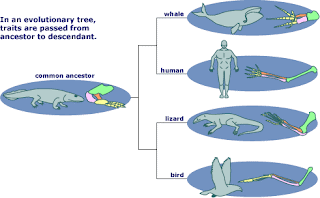












































































FYosQ~~60_57.jpg)


















































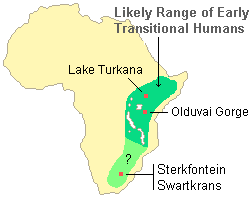












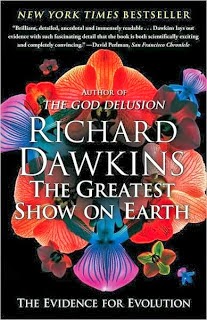














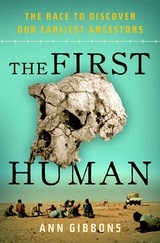










































































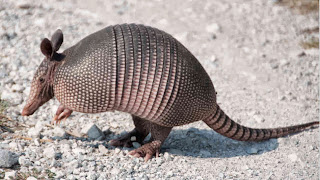










.jpg)



































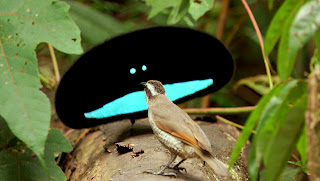

























































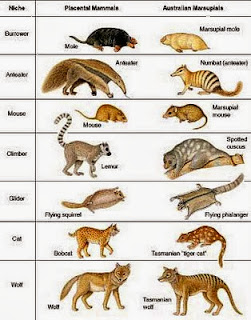





























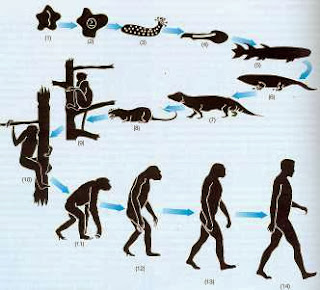
just excellent and marvelous work I am sharing it with my friends .
ReplyDelete